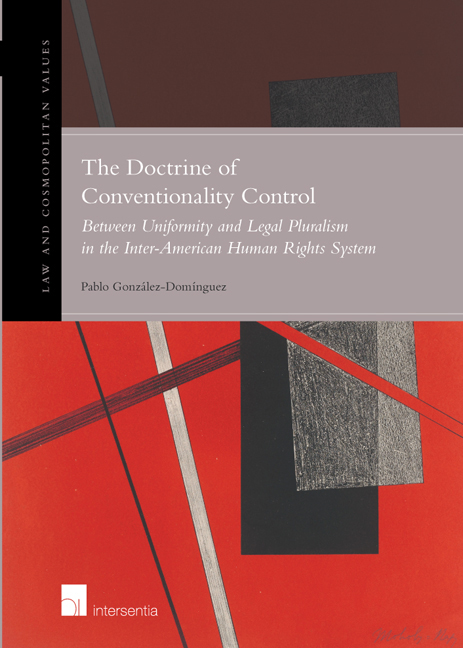 The Doctrine of Conventionality Control
The Doctrine of Conventionality Control One of the greatest and most persistent challenges of constructing a global system for the protection of human rights has always been how to bring international norms into a sustainable, healthy relationship with domestic constitutional systems.
It is self-evident that without strong domestic law and institutions, no global system of human rights protection could even aspire to be effective. Just as human rights pervasively get undermined and violated at local levels, so it is that they need to be protected and brought to life “in the small places, close to home,” as Eleanor Roosevelt noted. And it is equally clear that international norms and institutions by themselves, cannot simply substitute for and displace the structures and institutions and habits of local communities in the protection of human rights. Distant, limited in scope and capacity, and detached from the social contexts in which the rule of law and the protection of human rights must take root if they are to be made real, international norms and institutions alone, cannot be the guarantors of human dignity everywhere and for everyone.
Yet, since the mid-twentieth century the nations of the world and their citizens have not been content to leave the demands of human dignity to the uncertain and inconsistent vagaries of domestic authorities. Rather, we have dedicated ourselves to drawing up universal norms of human rights, translating them into positive law backed by institutions, and struggling to establish adherence to and respect for them. The experience of human wrongs, of the most egregious violations of human rights, has taught us all too clearly that local communities, even under the most favorable conditions of the constitutional rule of law, always bear within them temptations to tyranny and abuse. For their own viability and strength, they need the accountability and the constraints that can come from recognized universal standards of human rights.
This inescapable tension has played itself out over the last seven decades in the drafting of treaties and the creation of international courts no less than in the halls of constitutional assemblies and the jurisprudence of high courts around the world. It is necessarily a tension that is permanent and structural to the global protection of human rights. It is constantly open to revision and renegotiation, as dynamic as the shifting sands of law, politics and culture.
To save this book to your Kindle, first ensure [email protected] is added to your Approved Personal Document E-mail List under your Personal Document Settings on the Manage Your Content and Devices page of your Amazon account. Then enter the ‘name’ part of your Kindle email address below. Find out more about saving to your Kindle.
Note you can select to save to either the @free.kindle.com or @kindle.com variations. ‘@free.kindle.com’ emails are free but can only be saved to your device when it is connected to wi-fi. ‘@kindle.com’ emails can be delivered even when you are not connected to wi-fi, but note that service fees apply.
Find out more about the Kindle Personal Document Service.
To save content items to your account, please confirm that you agree to abide by our usage policies. If this is the first time you use this feature, you will be asked to authorise Cambridge Core to connect with your account. Find out more about saving content to Dropbox.
To save content items to your account, please confirm that you agree to abide by our usage policies. If this is the first time you use this feature, you will be asked to authorise Cambridge Core to connect with your account. Find out more about saving content to Google Drive.